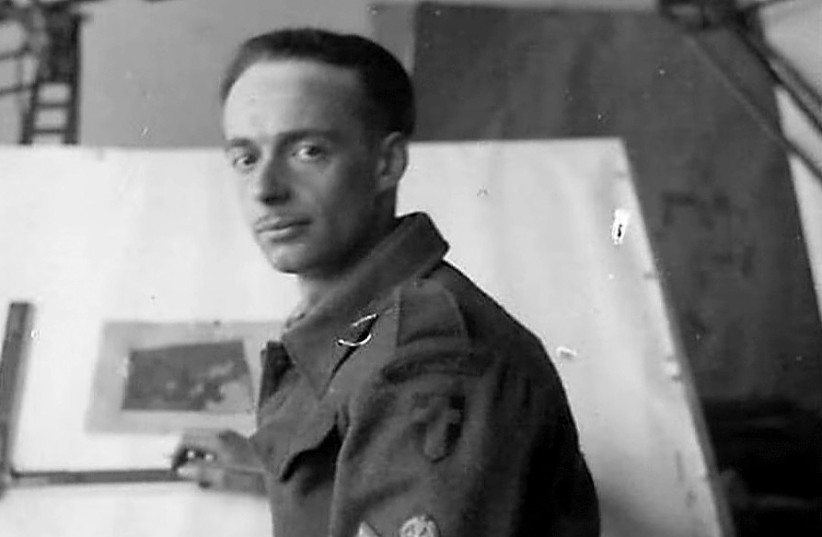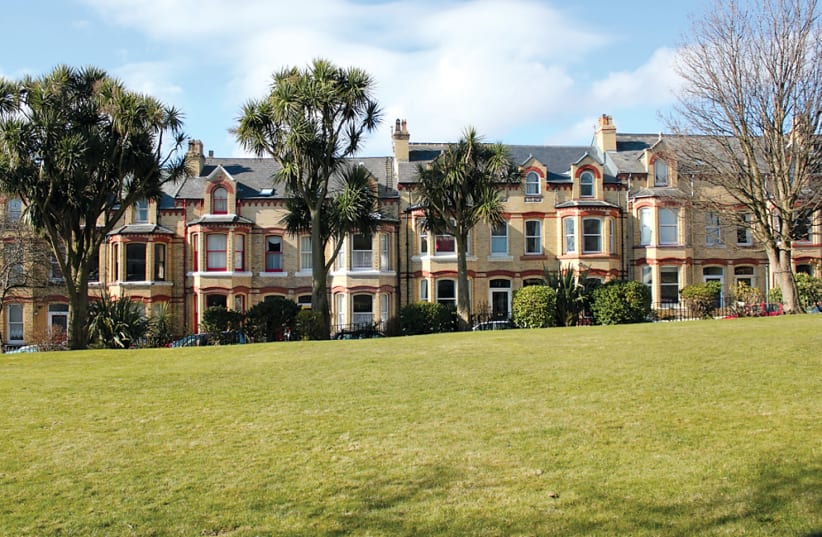Three weeks short of 17, orphaned Peter Fleischmann escaped Nazi Germany with the famed Kindertransport, only to be confined by barbed wire in Britain.
Fleischmann, an aspiring artist, was one of 73,500 refugees from Nazi Germany living in Britain when the war began. He would be among 27,000 interned by July 1940 as “enemy aliens” in a burst of hysteria: Among refugees from Nazidom – 80 percent of them Jews – might lurk spies.
Haven’t heard of this?
Not Britain’s finest moment, it has been brought to light fascinatingly by the prodigious research – 43 pages of tiny source notes – and smooth writing of British journalist and author Simon Parkin.
The Island of Extraordinary Captives, with photographs, a sketch of the camp and an index, tells this riveting story focused on Hutchinson, one of 10 internment camps on the Isle of Man, located between England and Northern Ireland. Other internees were sent to Australia and Canada.
The internment apparently wasn’t aimed at Jews; they just happened to have come from enemy nations. But their ethnicity didn’t help. “In truth, attitudes in Britain toward Jews were, in fact, dispiritingly close to those in Germany,” Parkin says. “Jews were the subject of a diverse range of prejudices.”
“In truth, attitudes in Britain toward Jews were, in fact, dispiritingly close to those in Germany. Jews were the subject of a diverse range of prejudices.”
Simon Parkin

At Hutchinson, Peter was among 1,200 men, “predominantly refugees from Nazi Germany who had been living peacefully in Britain,” bunched by 30s into sparsely furnished, 10-person summer-resort row houses, Parkin says.
Internees were indignant at the absurdity of being “arrested and interned on suspicion of being sympathetic to the same regime that had persecuted them,” Parkin says.
Fleischmann was among the oldest of 10,000 Jewish children brought to Britain from Germany, Austria and Czechoslovakia in 1938, making the cut because orphans received priority. After a brief stay with an unwelcoming uncle in Manchester, he fled to a shelter for young refugees, then lived with an employer until arrested before dawn on July 5, 1940.
“Only Peter’s nationality – the same nationality that Nazis hoped to strip from all German and Austrian Jews – had led to this nighttime arrest,” Parkin says.
Britain had put so-called enemy aliens into three categories according to perceived security risk. Fleischmann was in the lowest – free to travel but subject to a midnight curfew. His internment was doubly absurd: a Jewish refugee and not vulnerable to coercion to spy by threats against parents under Nazi rule.
His first stop was a filthy abandoned cotton mill with 2,000 other internees, where British officers went through the prisoners’ belongings and stole what they wanted. Then he was sent to Hutchinson.
Fellow internee Klaus Hinrichsen, 28, an art librarian featured prominently – and whose notes and writing were a big source for Parkin – called Hutchinson “perhaps the most extraordinary set of captives ever assembled.” It confined leading European professors, artists, actors and directors, writers, journalists, physicians, surgeons, musicians and fashion designers.
Spies? Spies try to fit in. These were “boys in their uniforms, the limping elderly, the well-dressed businessmen, the ruffle-haired intelligencia, the religious men wearing skullcaps or fur hats in midsummer,” speaking accented English.
This highbrow holding pen was run gently by a middle-aged British captain who encouraged creation of an inmate-run cultural department for lectures, English classes, Jewish cultural programing, musical performances, chess, bridge, boxing and gymnastics. It was the idea of Bruno Ahrends, once director of the Association of German Architects. The captain called it Hutchinson University.
“Here was an opportunity to learn from some of the best-regarded scholars in Europe,” Parkin says. The week Fleischmann arrived, 40 lectures were scheduled. A technical school, teaching skills useful in the war effort and beyond, was created by a self-important internee of questionable background.
But “all the frenetic organization and schedule making masked, for many, a seething sense of fear, betrayal, hurt and anger,” Parkin says. In fact, total internees included a few fascists; and at Hutchinson, prolonged investigation turned up an internee who’d been sent to Britain as a spy but never did any spying.
Neither starved nor abused, prisoners tended flowers, putted golf balls, swam at the beach and took island walks under guard. But lives were put on hold, and families were left without income.
Fleischmann, however, thrived. After “a life filled with loss, abandonment and sorrow,” Parkin says, “he had at last found his people” in Hutchinson’s mentoring community of artists, particularly famed Dadaist Kurt Schwitters.
Eventually, the government came to its senses. Three waves of releases diminished the camp population, taking with it cultural activities and leaving remaining men increasingly despondent, Parkin says.
Fleischmann’s release application was refused for a reason like Catch 22. His documents had disappeared, so “his application for release could not be processed because there was no record of his ever being interned.”
Soon he was offered an out: enlist. He refused, saying he’d enlist voluntarily but not under “sheer blackmail.”
After 14 months and 25 days at Hutchinson, Fleischmann was released on October 7, 1941, thanks to an artists’ advocate placing him with an art school. Drafted 16 months later, he interrogated captured Germans.
Post-war, he took the last name of his pre-war British friend Donald Midgley, and as Peter Midgley, he had a successful art and teaching career.
“Viewed kindly, Hutchinson had been a world of unparalleled opportunity,” Parkin says. “In no other circumstances before or since have the university don, the local butcher, the celebrated Dadaist, the lawmaker, the baker and the couture dressmaker been forced to cohabitate and, in doing so, enrich each others’ lives.
“Outside, looking in, the camp represented only a colossal waste of personnel and resources, a squandering of talent and manpower, the embodiment of a panic measure born of historical ignorance and bedrock xenophobia.”
And tragedy. At least 45 died in Isle of Man camps, a few by suicide. In July1940, Germans sank a ship carrying internees to Canada, killing about 800.
In October 1942, Germans sank a ship returning freed internees from Australia, killing all 362 passengers. Among them was Ulrich Alexander Boschwitz, 27, promising author of The Passenger, a novel republished in 2021 about a light-haired German Jew who for a time evades Nazi arrest by riding on trains.
He was the cousin of Rudy Boschwitz, who in 1991 was a US senator leading a team of American diplomats to negotiate the release of Ethiopian Jews for what became Operation Solomon.
Not all Britons shared in the hysteria. Parkin tells of intense work, especially of a committee led by Bertha Bracey, to get Jews out of Germany – no easy task – and into a Britain unenthusiastic about receiving them and then to advocate for the internees.
A postscript deals with the effects of the internment and what some did after the war.
But don’t quit yet: Parkin’s afterword unveils what Peter Fleischmann didn’t know about himself. ■
Neal Gendler is a Minneapolis writer and editor.
The Island of Extraordinary Captives: a painter, a poet, an heiress, and a spy in a World War II British internment campSimon ParkinScribner, 2022 | 419 pages, $30
